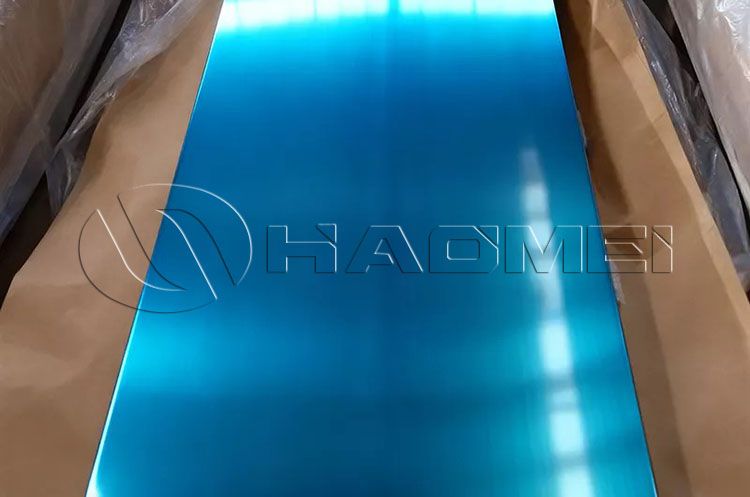Get in touch
-
Email:
sale@alumhm.com -
Tel/whatsapp:
+86-15978414719 -
Fax:
+86-0371-65621393 -
Address:
No.14 Waihuan Road, CBD, Zhengzhou, China -
Website:
https://www.aluminium-auto-sheet.com
Car Aluminum: 6016 VS 6014
With the trend toward lightweight in automobiles, aluminum alloys have become a core choice for body materials due to their low density and high cost-effectiveness. 6000-series aluminum alloys, due to their excellent formability and corrosion resistance, are widely used in body panels and structural parts. 6016 and 6014 aluminum alloy, successor alloys in this series, are often used in key components such as doors and hoods.

Basic Properties
6016 and 6014 aluminum sheets are both 6000-series aluminum alloys (primarily magnesium and silicon), but subtle differences in their compositional proportions lead to distinct performance characteristics:
6016 aluminum alloy: Magnesium content is approximately 0.8%-1.2%, silicon content is approximately 0.9%-1.3%, and a small amount of copper (0.15%-0.4%) is added. The addition of copper enhances its strength after heat treatment while retaining good ductility.
6014 aluminum alloy: It has a slightly lower magnesium content (0.4%-0.8%), a silicon content similar to 6016 (0.8%-1.2%), and contains no copper. The lower magnesium content makes it easier to form, but its strength is slightly lower than 6016.
Key Performance Comparison
For automotive aluminum, formability, strength, and corrosion resistance are three key performance indicators. 6016 and 6014 exhibit distinct differences in these three areas:
1. Formability
Automotive panels (such as doors and fenders) often require complex stamping processes, and formability directly determines the part's yield rate.
6014 aluminum: Due to its lower magnesium content, the material exhibits better plasticity and is less prone to cracking during complex processes such as deep drawing and bending. It is particularly suitable for parts with complex shapes that require multiple stamping cycles.
6016 alloy : While its formability can meet general requirements, it's slightly inferior to 6014. It's more suitable for applications requiring simpler stamping processes but requiring higher strength.
2. Strength
Body components require sufficient strength to ensure driving safety, especially those that must withstand certain external forces, such as the hood and roof.
6016 aluminum plate: Thanks to the addition of copper and a higher magnesium content, after T4 (solution treatment followed by natural aging) or T6 (solution treatment followed by artificial aging) heat treatment, it achieves a tensile strength of 260-300 MPa and a yield strength of approximately 200-240 MPa, providing improved resistance to impact and loads.
6014 aluminum sheet: With a tensile strength of approximately 220-260 MPa and a yield strength of approximately 160-200 MPa, while its strength is lower than 6016, it can meet the requirements of non-core load-bearing components such as doors and trunk lids.
3. Corrosion Resistance
Cars are exposed to corrosive environments such as rain and salt for extended periods of time, and corrosion resistance is the bottom line for a material's durability.
Both 6016 and 6014 alloys are heat-treatable aluminum alloys. After anodizing or electrophoretic coating, they form a dense protective layer with salt spray resistance exceeding 500 hours (the industry standard requires ≥300 hours), ensuring a vehicle's service life of more than 10 years. In its uncoated state, 6014 exhibits slightly better corrosion resistance than 6016 due to its copper-free state. However, in practice, the coating process can compensate for this subtle difference.
Application Scenarios
Due to its higher strength, 6016 alumium sheet for sale is primarily used for panels requiring high strength and safety. For example:
Hoods: These must withstand stone impacts and minor collisions while maintaining structural stability. 6016 alloy's high strength effectively prevents deformation.
Roofs: These must bear the weight of sunroofs and rain and snow loads. 6016's bending resistance reduces the risk of roof collapse.
Doors of some high-end models: Some luxury brands choose 6016 alloy over 6014 aluminum to improve door safety. Due to its excellent formability, 6014 aluminum has become a popular choice for complex panels. Typical applications include:
Door inner/outer panels: Doors have diverse shapes, often featuring complex recesses and curves. 6014 alloy's easy formability reduces stamping complexity.
Fenders: With large curvatures and deep stamping depths, 6014 can better conform to the mold shape, reducing the risk of cracking.
Trunk lids: Lower strength requirements and flexible styling make 6014 aluminum sheet a more cost-effective option.
